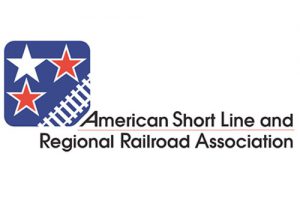Association of American Railroads traffic report for week ending 12/28/2019 and volumes for December 2019
Written by David C. Lester, Editor-in-Chief
The Association of American Railroads (AAR) today reported U.S. rail traffic for the week ending December 28, 2019, as well as volumes for December 2019.
U.S. railroads originated 928,102 carloads in December 2019, down 9.2 percent, or 93,788 carloads, from December 2018. U.S. railroads also originated 990,934 containers and trailers in December 2019, down 9.6 percent, or 105,239 units, from the same month last year. Combined U.S. carload and intermodal originations in December 2019 were 1,919,036, down 9.4 percent, or 199,027 carloads and intermodal units from December 2018.
In December 2019, six of the 20 carload commodity categories tracked by the AAR each month saw carload gains compared with December 2018. These included: all other carloads, up 1,510 carloads or 6.7 percent; petroleum & petroleum products, up 814 carloads or 1.6 percent; and primary forest products, up 631 carloads or 16.5 percent. Commodities that saw declines in December 2019 from December 2018 included: coal, down 64,932 carloads or 19 percent; grain, down 6,846 carloads or 7.8 percent; and crushed stone, sand & gravel, down 6,395 carloads or 8.4 percent.
Excluding coal, carloads were down 28,856 carloads, or 4.2 percent, in December 2019 from December 2018. Excluding coal and grain, carloads were down 22,010 carloads, or 3.7 percent.
Total U.S. carload traffic for the first 12 months of 2019 was 12,972,404 carloads, down 4.9 percent, or 668,075 carloads, from the same period last year; and 13,732,570 intermodal units, down 5.1 percent, or 740,240 containers and trailers, from last year.
Total combined U.S. traffic for the first 52 weeks of 2019 was 26,704,974 carloads and intermodal units, a decrease of 5 percent compared to last year.
“No question, 2019 was a challenging year for rail traffic, thanks mainly to the macroeconomy and continued years-long changes in energy markets,” said AAR Senior Vice President John T. Gray. “Trade disputes and the general economic uncertainty they spawned harmed rail-served industries much more than the overall economy. With recent progress on USMCA and in the China trade talks, railroads are hopeful that these lingering issues will be resolved in 2020 and create the certainty rail customers need to invest.”
“Coal was by far the biggest source of U.S. rail carload decline in 2019, falling 9.2 percent — more than 405,000 carloads — from 2018,” said Gray. “In fact, coal carloads in 2019 were their lowest in decades and were 45 percent lower than their 2006 peak. Excluding coal, carloads in 2019 were down 2.8 percent. Despite intermodal declines compared to 2018, 2019 was the second highest year for U.S. intermodal in history. Once trade disputes are settled and operational changes aimed at improving network efficiency are fully implemented, railroads anticipate intermodal growth will return and stand ready to meet the demands of rail customers and the U.S. economy.”
Week Ending December 28, 2019
Total U.S. weekly rail traffic was 373,728 carloads and intermodal units, down 9.2 percent compared with the same week last year.
Total carloads for the week ending December 28 were 191,590 carloads, down 8.9 percent compared with the same week in 2018, while U.S. weekly intermodal volume was 182,138 containers and trailers, down 9.5 percent compared to 2018.
None of the 10 carload commodity groups posted an increase compared with the same week in 2018. Commodity groups that posted decreases compared with the same week in 2018 included coal, down 8,018 carloads, to 60,454; grain, down 2,960 carloads, to 15,524; and nonmetallic minerals, down 2,107 carloads, to 19,035.
North American rail volume for the week ending December 28, 2019, on 12 reporting U.S., Canadian and Mexican railroads totaled 275,879 carloads, down 7 percent compared with the same week last year, and 247,216 intermodal units, down 7.6 percent compared with last year. Total combined weekly rail traffic in North America was 523,095 carloads and intermodal units, down 7.3 percent. North American rail volume for the 52 weeks of 2019 was 36,486,394 carloads and intermodal units, down 4 percent compared with 2018.
Canadian railroads reported 70,850 carloads for the week, down 1 percent, and 52,790 intermodal units, down 0.9 percent compared with the same week in 2018. For all of 2019, Canadian railroads reported cumulative rail traffic volume of 7,829,717 carloads, containers and trailers, down 0.4 percent.
Mexican railroads reported 13,439 carloads for the week, down 9.4 percent compared with the same week last year, and 12,288 intermodal units, down 4.6 percent. Cumulative volume on Mexican railroads for all of 2019 was 1,951,703 carloads and intermodal containers and trailers, down 2.9 percent from the same point last year.
An Association of American Railroads press release.
For the latest railroad news, please visit rtands.com.





